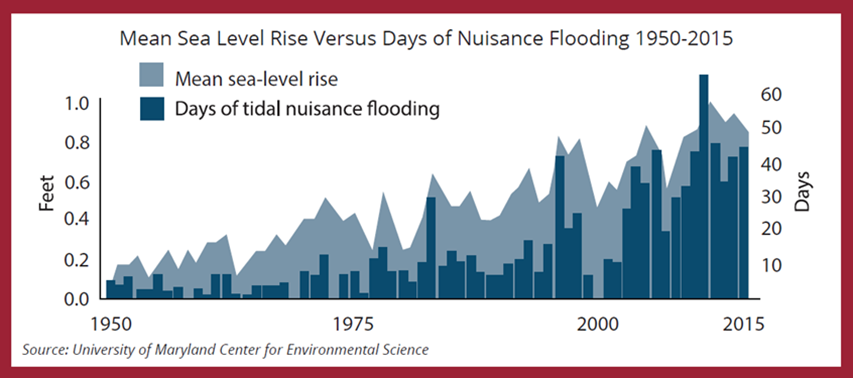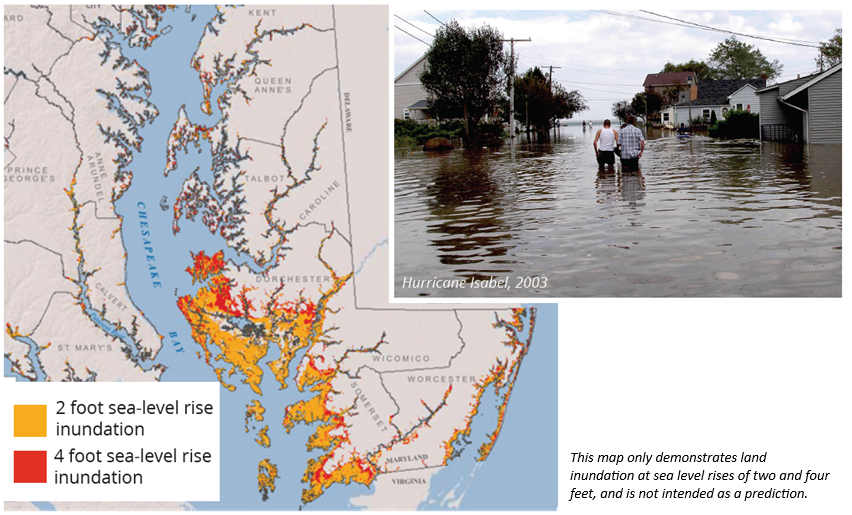Adapting and Becoming Resilient to Climate Change
Page Content
Addressing new environmental challenges and risk management as a result of sea level rise, atypical storms, and flooding
The Maryland Commission on Climate Change notes that, “with 3,100 miles of shoreline, Maryland is
one of the most vulnerable states in the nation to climate change, and we’re already seeing its impacts”
(MCCC Fact Sheet 1). The risk goes beyond Maryland’s shoreline to include interior areas and our
infrastructure as well. Climate adaptation and resiliency reflect the determination of Marylanders in
the face of challenges and are necessary components of climate change response. Many state agencies,
organizations and local governments are tracking the threat to resources, be they cultural or natural,
and A Better Maryland supports a unified approach to information gathering and communication.
Scientific data and projections are also vital to local and state planning, and the digital resource center
will make them more accessible, addressing the needs of each community.

The Strategies
CC 1: Establish ongoing climate adaptation forums and educational resources for local jurisdictions and other stakeholders, including local exchanges on coastal resiliency best practices and the Association of Climate Change Officers training.
Timeline
2020
Years 0-2
Years 2-4
Years 4-6
2026
CC 2: Identify and prioritize historic and archaeological sites located on state-controlled lands vulnerable to climate change impacts.
Timeline
2020
Years 0-2
Years 2-4
Years 4-6
2026
CC 3: Assist local governments as requested with integration of adaptation and resiliency planning into hazard mitigation and comprehensive plans, capital improvement programming or other local programs.
Timeline
2020
Years 0-2
Years 2-4
Years 4-6
2026
CC 4: Promote healthy soils, which are vital to ecological and agricultural resilience.
Timeline
2020
Years 0-2
Years 2-4
Years 4-6
2026
CC 5: Improve access to information on current and future flood risks in state and local planning and programming.
Timeline
2020
Years 0-2
Years 2-4
Years 4-6
2026
CC 6: Develop tools, educational materials and technical assistance that local governments
and other entities and organizations can use to protect natural resources of the greatest
biological and ecological value, and ensure adaptation to future climate change impacts
and restore, when possible, natural resources that provide risk-reduction benefits to
communities.
Timeline
2020
Years 0-2
Years 2-4
Years 4-6
2026
CC 7: Cross train staff among state agencies on coastal resiliency best practices as they may impact environmental policies and programs.
Timeline
2020
Years 0-2
Years 2-4
Years 4-6
2026
Center_Content
